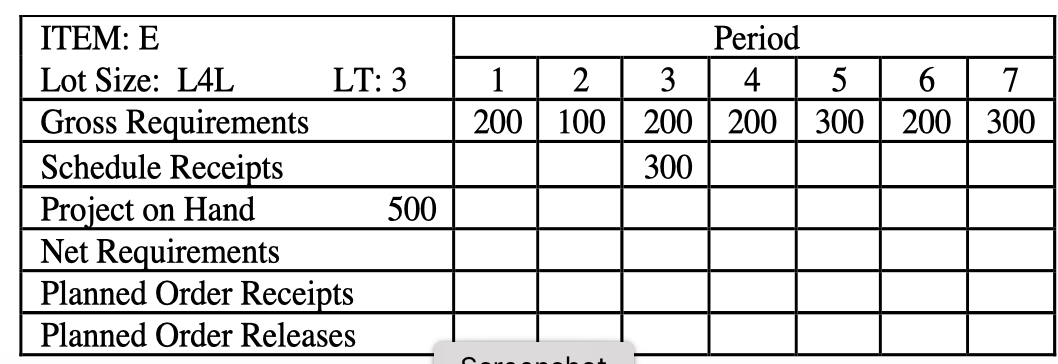Question
1. Which of the following is not an assumption of the EOQ model? a) demand is known and constant b) no shortages allowed. c) lead
1. Which of the following is not an assumption of the EOQ model? a) demand is known and constant b) no shortages allowed. c) lead time is determined by quantity ordered. d) order quantity is received all at once.
3. A company produces a product which is designed to weigh 10 oz., with a tolerance of + 0.5 oz. The process produces products with an average weight of 9.95 oz. and a standard deviation of 0.10 oz. The process capability ratio for this process is with z = 3. a) 1.67 b) 0 c) 0.8333 d) -1.67 17.The lessons of Kingsman formula include all except: a) Management must decide the tradeoffs in the business environment between these factors b) Large utilization in organizations can result in people burnout c) If utilization is high, common variation will have small negative impact d) If used as the primary operations performance measure of resources, it may lead to sub-optimal system performance (lower profit)
21. Techniques to help reduce the uncertainty of forecasting include all expect: a) Try to minimize the need to forecast parts of the operation, rather use actual demand instead (Pull) where possible b) Utilize a complex computerized forecasting system c) Assure someone is responsible for the forecast process d) Use processes that are less reliant on forecasting e) Try to reduce lead times so the forecasting efforts are minimized i.e 23. When management accepts more orders that can be produced, which law of operations has been violated? a) Variation/Uncertainty reduces global output b) Input into the system must be carefully managed or WIP, Lead Times, Service Levels and Excess Expediting will reduce throughput c) The basic rule describing the overall relationship between output, inventory and cycle time is Littles Law d) At any given time, every operational system will have a constraint that limits the global output. 24. The planned order release for period 3 would be a) 100 b) 200 c) 270 d) 300  35. If a chase demand strategy is used, then the number of workers hired at the start of quarter 2 is: a) 10 b) 20 c) 35 d) 80 36. If a level production strategy is used, then the inventory at the end of quarter 3 is a) 18,750 b) 12,500 c) 25,650 d) 31,250 48. A forecasting model has produced the following forecasts: At the end of May the tracking signal would be a) 0.000. b) 0.667 c) 1.333. d) 2.143
35. If a chase demand strategy is used, then the number of workers hired at the start of quarter 2 is: a) 10 b) 20 c) 35 d) 80 36. If a level production strategy is used, then the inventory at the end of quarter 3 is a) 18,750 b) 12,500 c) 25,650 d) 31,250 48. A forecasting model has produced the following forecasts: At the end of May the tracking signal would be a) 0.000. b) 0.667 c) 1.333. d) 2.143 
Step by Step Solution
There are 3 Steps involved in it
Step: 1

Get Instant Access to Expert-Tailored Solutions
See step-by-step solutions with expert insights and AI powered tools for academic success
Step: 2

Step: 3

Ace Your Homework with AI
Get the answers you need in no time with our AI-driven, step-by-step assistance
Get Started


